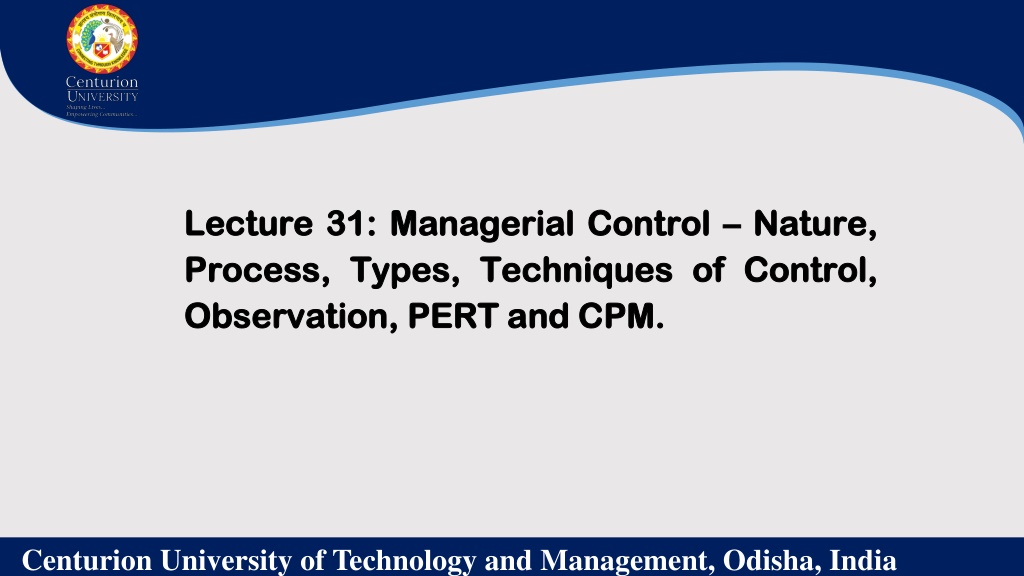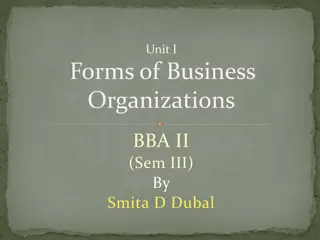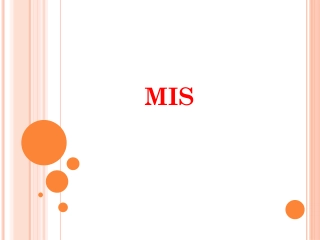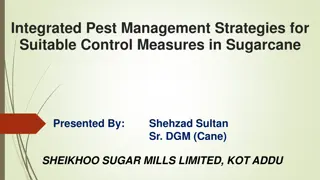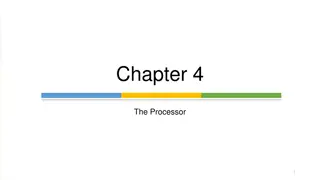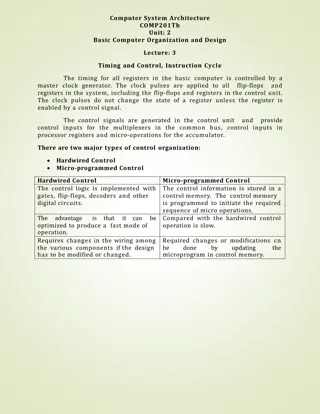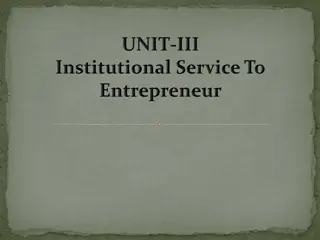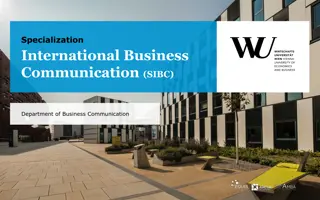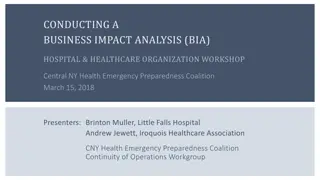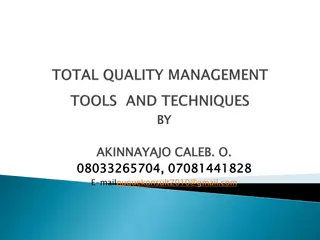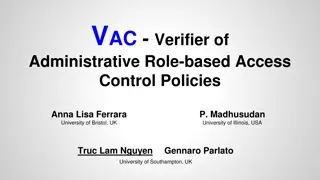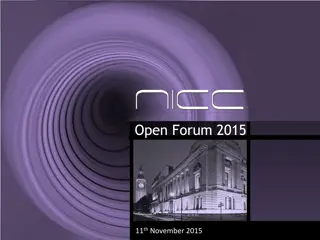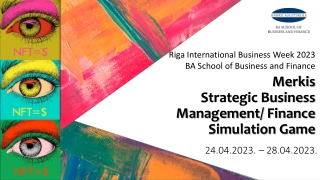Understanding Management Control in Business Organizations
Management control plays a crucial role in enabling managers to make informed decisions, understand their company's history, and drive corporate performance. It involves defining strategies, monitoring their implementation, allocating resources, measuring organizational performance, and taking corrective actions. The process includes planning, budgeting, and implementation phases to ensure the smooth running of a company's activities. Centurion University of Technology and Management in Odisha, India, emphasizes the importance of management control in enhancing organizational effectiveness and achieving strategic objectives.
Download Presentation

Please find below an Image/Link to download the presentation.
The content on the website is provided AS IS for your information and personal use only. It may not be sold, licensed, or shared on other websites without obtaining consent from the author. Download presentation by click this link. If you encounter any issues during the download, it is possible that the publisher has removed the file from their server.
E N D
Presentation Transcript
Lecture Lecture 31 Process, Process, Types, Observation, Observation, PERT 31: : Managerial Managerial Control Types, Techniques Techniques of PERT and and CPM Control Nature, of Control, CPM. . Nature, Control, Centurion University of Technology and Management, Odisha, India
Management control is often mistaken for accounting or a means of monitoring the economic and commercial activity of a company or organization. Indeed, when it was set up at the beginning of the 20th century in industrial companies, the management control was intended to control the smooth running of the firm's activities. Centurion University of Technology and Management, Odisha, India
What are the interests of management control? The management control allows the manager to have a clear vision of his company and to understand the history of the company in order to make decisions. It is therefore, on the one hand, a decision-making function for management. In fact, by evaluating the company's financial, economic, commercial or social data, management control provides elements that make it possible to carry out a company policy. On the other hand, it should be known that management control interacts with the various functions of the company and not exclusively with the management and the accounting function, to which it is too often assimilated. From this point of view, we can affirm that the "management control" function is an information management system intended to drive corporate performance. Centurion University of Technology and Management, Odisha, India
The objectives of the management control are: To contribute to the definition of the strategy; To monitor the implementation of the strategy; To prepare the allocation of resources in line with short- term objectives and strategic objectives To measure the organizational performance; To control the activity and take corrective actions 1. 2. 3. 4. 5. Centurion University of Technology and Management, Odisha, India
Phases of the process Planning:The starting point of management control is the planning phase in which the objectives are defined, then translated into operational acts through marketing, investment, human resources management and financial management policies. In this phase, a strategy must be defined operationally regarding: the product / market pairs; investments and divestments; the organization and management of HR, the adaptation of the production tool where appropriate; Budgeting:The budget phase begins with the setting of the short-term objectives, which are derived from the medium-term action programs, but take into account the constraints and the plans of action decided for the coming year. Most of this phase is in the definition, coordination and approval of the company's action plans. Centurion University of Technology and Management, Odisha, India
Action and follow-up of achievements. The overriding phase that follows budgeting is the execution of the action plans and their translation into facts in order to achieve the objectives. The control process is therefore inseparable from the management of the company, and its implementation is done through the use of various tools, including long-term and medium term plans, one-off economic studies, statistics, general accounting and cost accounting, ratios, dashboards...etc. Measure results. The final step is to analyse the results with the aim of identifying the necessary corrective actions. Today, decision-makers not only ask management control to calculate costs and measure results afterwards, but to continuously monitor the performance of all activities in order to help in real time decision-making throughout the strategic and operational process. Centurion University of Technology and Management, Odisha, India
Benefits of effective management control: The purpose of any business is to generate profit, and generally, it is through general accounting that one determines whether the company has generated profits or losses during a given period. However, these data do not allow to define what was the margin generated for the sale of a product or a service. It is only through cost accounting that we can calculate the costs of production and we can see the profit made for each piece of product sold. The management control also makes it possible to evaluate the expenses borne by each service within the company. Centurion University of Technology and Management, Odisha, India
Traditional Types of Control Techniques in Management I. Budgetary Control II. Standard Costing III. Financial Ratio Analysis IV. Internal Audit V. Break-Even Analysis VI. Statistical Control Centurion University of Technology and Management, Odisha, India
PERT and CPM Project Evaluation and Review Technique (PERT): PERT is appropriate technique which is used for the projects where the time required or needed to complete different activities are not known. PERT is majorly applied for scheduling, organization and integration of different tasks within a project. It provides the blueprint of project and is efficient technique for project evaluation. 1. Critical path method (CPM): CPM is a technique which is used for the projects where the time needed for completion of project is already known. It is majorly used for determining the approximate time within which a project can be completed. Critical path is the largest path in project management which always provide minimum time taken for completion of project 2. Centurion University of Technology and Management, Odisha, India
Difference between PERT and CPM: Sl.No. PERT CPM 1. CPM is that technique of project management which is used to manage only certain (i.e., time is known) activities of any project. It is activity oriented technique which means that network is constructed on the basis of activities. PERT is that technique of project management which is used to manage uncertain (i.e., time is not known) activities of any project. 2. It is event oriented technique which means that network is constructed on the basis of event. Centurion University of Technology and Management, Odisha, India
3. 4. It is a probability model. It majorly focuses on time as meeting time target or estimation of percent completion is more important. It is a deterministic model. It majorly focuses on Time-cost trade off as minimizing cost is more important. It is appropriate for reasonable time estimation. It has repetitive nature of job. There may be crashing because of certain time boundation. It uses dummy activities for representing sequence of activities. It is suitable for construction projects. 5. It is appropriate for high precision time estimation. It has Non-repetitive nature of job. There is no chance of crashing as there is no certainty of time. It doesn t use any dummy activities. 6. 7. 8. 9. It is suitable for projects which required research and development. Centurion University of Technology and Management, Odisha, India
Network diagram for the Critical Path Method problem and Project Evaluation and Review Technique Centurion University of Technology and Management, Odisha, India
